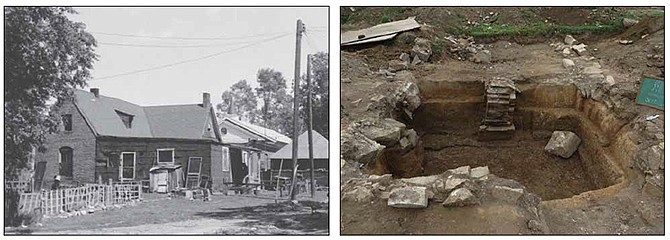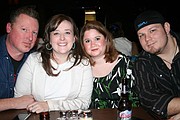For those who remember The Foot, there's no doubt of its historical significance. But the once-integral commercial district of the black neighborhood during segregation has been out of sight for more than 50 years.
What urban renewal razed of the Jefferson City neighborhood, the Missouri Department of Transportation (MoDOT) was able to identify through archaeology.
As development of a Lafayette Street interchange with U.S. 50/63 proceeds, MoDOT archaeologists continue to clean, sort and identify artifacts and measurements from the northwest corner of Lafayette and Elm streets. As part of the required federal directives, a final report of the site will be prepared and delivered to the State Historic Preservation Office.
However, archaeological sites are sensitive, and MoDOT's report will not be available to the general public.
Archaeologist Brianne Greenwood would like to see the research continue led by the community.
The modern and urban nature of this excavation sets it apart from most of the 19th-century and earlier archaeological sites where MoDOT archaeologists work, Greenwood said.
They started with ground-penetrating radar and a GIS map overlay using the early Sanborn Insurance map of the district. They followed the anomalies to find the remnants of Ulysses Grant Tayes' house on the corner, including the stone fence foundation, a chimney and a cellar.
Then, Greenwood began to collect information about residents like Tayes, who earned three degrees from Lincoln University.
"He was an artist, poet, barber, teacher - a renaissance man," Greenwood said.
The research also benefited from photographs of the area, including a 1960 picture of Tayes' one-story home. In that photo is a small, attached building that is rumored to have been purchased from Fort Leonard Wood, when the military base began replacing temporary buildings with permanent ones, Greenwood said. She's still researching that one.
"We don't uncover every aspect, only what will be impacted by the project and then information about the people and property," Greenwood said. "Because this is an African-American neighborhood, there's not a lot of history written down. We're trying to make sure it is written down."
Urban renewal removed only the building above ground and left the sites vacant, which was beneficial to this archaeological work, as features were intact just a foot below the surface, Greenwood said.
Two doors north on Lafayette Street from the Tayes' home was the Logan family's shoe shop. And in between was the Duke Diggs house. A brick home was built in 1918 on the same site as a former frame home, which was relocated to Elm Street behind the Tayes' home, Greenwood said.
Oral histories and first-hand accounts helped her piece the history together.
"Sometimes with archaeology, when you think you're done, you're not," Greenwood said.
Because people are still alive who remember the location, that makes this project particularly exciting, she said.
If community partners can be found, Greenwood added, MoDOT might fund an oral history project.
"We concentrated on the impact area; but there are the same stories for all the blocks," she said.
Authors like Gary Kremer and the late Lorenzo Greene have recorded some of the area's history. A Friends of Lafayette Street group organized last year to preserve the street's name when it was suggested to change it to "University." And the February Historic City of Jefferson newsletter provided a detailed history written by Toni Prawl about the thoroughfare.
"I am thrilled to see the renewed interest in The Foot," Kremer said. "Although much has already been discovered about this neighborhood, there is still much more to learn."
Collecting oral histories would help understand what that place meant to people who lived there, what was lost in its destruction and what everyday life was like, he said.
The Historic City of Jefferson has expressed interest in the oral history project, said President Tammy Boeschen.
The next goal is to nominate The Foot business district to the National Register of Historic Places as an archaeological historic site, Greenwood said.
Lincoln University owns the west side of Lafayette Street between Elm and Dunklin streets. There, nostalgic icons including the Booker T. Washington Hotel, a "greasy spoon" and the Green Onion stood for decades, Prawl wrote.
An archaeological survey of that block might help reveal more of the district's story, Greenwood suggested.
The Campus View Urban Renewal Project removed the heart of the community beginning in the late 1950s, Prawl said. Most of what few buildings remained were claimed in the present interchange project. Still standing are the medical offices of Dr. William Ross at the corner of Miller and Lafayette streets and the Community Center on the south side of Dunklin at Lafayette Street.
"The historic environment of The Foot neighborhood has mostly perished; the archaeological site that must convey its significance is only a remnant of more than a century of valuable black culture in Jefferson City," Prawl concluded.
Call 573-526-7908 or email [email protected] for more information.
Community Notice:
The Friends of Lafayette Street will meet at 7 p.m. Tuesday at the Coca-Cola Community Building.


